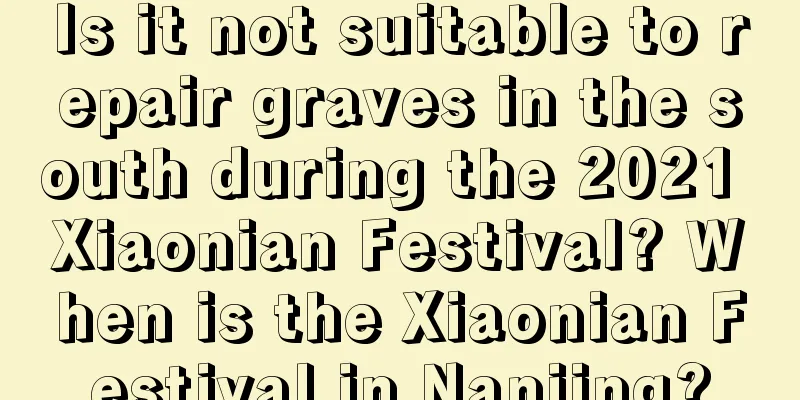What are the characteristics of the Mid-Autumn Festival? Do other countries have the Mid-Autumn Festival? What are the Mid-Autumn Festival customs in different regions?

Introduction: Mid-Autumn Festival is one of the important traditional festivals. So what are the characteristics of Mid-Autumn Festival? Does other countries have Mid-Autumn Festival? What are the Mid-Autumn Festival customs in different regions? In the eighth month of the lunar calendar, the sky is high and the clouds are light, and the moon is clear in the cold pond; in the eighth month of the lunar calendar, the wind is clear and the air is refreshing, and the osmanthus fragrance is in the air; in the eighth month of the lunar calendar, the world is colorful and the harvest is abundant. Come to Shuimoxiansheng.com to learn more about the eighth month of the lunar calendar in 2020.What are the characteristics of Mid-Autumn Festival?When talking about the Mid-Autumn Festival, the characteristics that come to mind are eating moon cakes and appreciating the moon, which are important symbols of the festival. In Zhejiang area, watching the tide is also one of the characteristics of the Mid-Autumn Festival.Mid-Autumn Festival Characteristics: Eating Mooncakes Mooncakes, also known as moon cakes, harvest cakes, palace cakes, reunion cakes, etc., were offerings to the moon god during the Mid-Autumn Festival in ancient times. Mooncakes were originally used as offerings to the moon god. Later, people gradually regarded the Mid-Autumn Festival moon-watching and mooncake tasting as a symbol of family reunion. Mooncakes symbolize reunion, and people regard them as festive food, using them to worship the moon and give them to relatives and friends. Today, eating mooncakes has become an essential custom for celebrating the Mid-Autumn Festival in all parts of China. People eat mooncakes on this day to show "reunion". Mid-Autumn Festival Features: Moon Viewing The custom of moon-watching originated from the moon-worshipping ceremony, and the solemn worship turned into a relaxing entertainment. It is said that the moon is closest to the earth on this night and is the largest, roundest and brightest, so there has been a custom of feasting and appreciating the moon since ancient times. A daughter-in-law who returns to her parents' home must return to her husband's home on this day to symbolize perfection and auspiciousness. Written records of folk activities of watching the moon during the Mid-Autumn Festival appeared in the Wei and Jin Dynasties, but it did not become a custom. By the Tang Dynasty, appreciating and playing with the moon during the Mid-Autumn Festival was quite popular, and many famous poems by poets contain verses about the moon. Mid-Autumn Festival Features: Tide Watching In ancient times, in addition to moon-watching during the Mid-Autumn Festival, watching the tide was another major Mid-Autumn Festival event in Zhejiang. The custom of watching the tide during the Mid-Autumn Festival has a long history. As early as the Han Dynasty, there was a very detailed description of it in Mei Cheng's "Seven Hairs". After the Han Dynasty, the custom of watching the tide during the Mid-Autumn Festival became more popular. There are also records of watching the tide in Zhu Tinghuan's "Supplement to Wulin Old Stories" in the Ming Dynasty and Wu Zimu's "Dreams of the Southern Song Dynasty" in the Song Dynasty. Does other countries have Mid-Autumn Festival?The Mid-Autumn Festival is not unique to our country. Some Southeast Asian national days have been influenced by us and also celebrate the Mid-Autumn Festival. Of course, some of them are due to the trend started by our Chinese. The details are as follows:Korean Peninsula <br /> In Korean, it is called "추석 (Chuseok)", "중추절 (Mid-Autumn Festival)", "가배 (Gahae)", "중추 (Mid-Autumn)", "가배일 (Gahae Day)", and "중추가절 (Mid-Autumn Festival)". It is a day to sweep tombs and offer sacrifices to ancestors with newly harvested grains and fruits. Returning to hometown to visit relatives and giving gifts to friends and relatives is also a custom during the Mid-Autumn Festival. Therefore, the Mid-Autumn Festival on the Korean Peninsula is also called "Korean Thanksgiving Day" in English. Vietnam <br /> Mid-Autumn Festival is also a festival for Vietnamese children. That night, the children listened to the legend of Agui, watched lion dancing, and some even asked their fathers to buy them a lion for dancing and played with their friends. Vietnamese children carry carp lanterns when going out to play on Mid-Autumn Night, which also indicates that they will be able to "jump over the dragon gate" when they grow up. Japan <br /> The traditional Mid-Autumn Festival in Japan is called the 15th Night, also known as the Mid-Autumn Festival and the Taro Festival. Japanese people eat glutinous rice dumplings when appreciating the moon, which are called "moon-viewing dumplings". Since this period is the harvest season for various crops, the Japanese hold various celebrations to express their gratitude for the blessings of nature. Japanese people also appreciate the moon, which is called "moon viewing". Moon-viewing dumplings, silver grass, taro, etc. are displayed in the house. Singapore <br /> Singapore is a country where the Chinese make up the majority of the population and they always attach great importance to the annual Mid-Autumn Festival. For the Chinese in Singapore, the Mid-Autumn Festival is a godsend opportunity to reconnect with others and express gratitude. Friends, relatives and business partners give mooncakes to each other to express greetings and wishes. Malaysia, Philippines <br /> Eating moon cakes, appreciating the moon, and parading with lanterns are Mid-Autumn Festival customs passed down from generation to generation by the Chinese in Malaysia. As the Mid-Autumn Festival approaches, time-honored businesses across Malaysia have launched a variety of mooncakes. There are mooncake counters in all major shopping malls in the capital city of Kuala Lumpur, and mooncake advertisements are everywhere in newspapers and on television, creating a festive atmosphere for the Mid-Autumn Festival. Chinese communities in some parts of Kuala Lumpur are currently holding lantern parades to celebrate the Mid-Autumn Festival. In addition to dragon and lion dances, floats carrying "Chang'e" and "Seven Fairies" roam around, and artists and young people in brightly dressed costumes sing and dance. The Mid-Autumn Festival is a traditional festival that is highly valued by overseas Chinese living in the Philippines. Chinatown in Manila, the capital of the Philippines, is bustling with activity as local Chinese hold events to celebrate the Mid-Autumn Festival. The main commercial streets in the overseas Chinese communities are decorated with lights and colorful banners are hung at major intersections and on the small bridges leading into Chinatown. Many shops sell a variety of homemade or imported mooncakes. Mid-Autumn Festival celebrations include dragon dance parades, national costume parades, lantern parades and float parades. Mid-Autumn Festival customs in different regions1. Southern region:In Chaoshan, Guangdong , there is a custom of worshiping the moon during the Mid-Autumn Festival, mainly among women and children. There is a saying that "men don't worship the full moon, and women don't worship the kitchen god." There is also a local custom of eating taro during the Mid-Autumn Festival. There is a saying in Chaoshan: "Where the river is facing the mouth, you can eat taro." August is the taro harvest season, and farmers are accustomed to using taro to worship their ancestors. Burning towers on Mid-Autumn Night is also very popular in some places. The folks in the Jiangnan area also have a variety of customs during the Mid-Autumn Festival. In addition to eating mooncakes during the Mid-Autumn Festival, Nanjing people must also eat the famous Jinling dish, osmanthus duck. "Osmanthus Duck" is available on the market when the osmanthus fragrance fills the air. It is fat but not greasy and tastes delicious. The women in the south of the Yangtze River are skillful and can turn the objects described in poems into delicacies on the table. Nanjing people call the moon-watching with family "celebrating reunion", the gathering for drinking "full moon", and the outing to the streets "walking the moon". People in Wuxi County , Jiangsu Province burn incense sticks on the Mid-Autumn Festival night. The incense burner is covered with gauze and painted with scenes from the Moon Palace. There are also incense burners made of incense sticks, with paper-made Kuixing (the star of heaven) and colorful flags inserted on them. Shanghainese people serve sweet-scented osmanthus honey wine as a side dish during their Mid-Autumn Festival banquet. 2. Northern region: Farmers in Qingyun County, Shandong Province offer sacrifices to the God of Earth and Grain on August 15th, which is called "Qingmiao Society". In Zhucheng, Linyi, Jimo and other places, people not only worship the moon but also visit the graves to worship their ancestors. Landlords in Guanxian, Laiyang, Guangrao and Youcheng also hosted banquets for their tenants during the Mid-Autumn Festival. During the Mid-Autumn Festival in Jimo, people eat a special food called "wheat arrow". Lu'an, Shanxi Province , hosts a banquet for sons-in-law during the Mid-Autumn Festival. In Datong County, mooncakes are called reunion cakes, and there is a custom of staying up all night on Mid-Autumn Night. Wanquan County , Hebei Province calls the Mid-Autumn Festival "Little New Year's Day". Images of the Moon God and Guandi reading the Spring and Autumn Annals at night are painted on moon paper. People in Hejian County believe that the Mid-Autumn rain is bitter rain. If it rains on Mid-Autumn Festival, the locals believe that the vegetables will definitely taste bad. On the night of the Mid-Autumn Festival in Xixiang County, Shaanxi Province, men went boating on the cliff, while women prepared a feast. No matter rich or poor, everyone must eat watermelon. During the Mid-Autumn Festival, there are drummers who go door to door playing drums and asking for tips. During the Mid-Autumn Festival in Luochuan County, parents lead their students to bring gifts to pay respects to their teachers, and lunch is more common than school gatherings. The eight characters can be used to calculate when your marriage will begin and the depth of your past life love in this life. Please click on the "Excellent Calculation" below to make predictions in advance. I wish you find your soulmate soon! |
>>: What can’t you eat during Cold Dew? Introduction to Cold Dew Diet Taboos
Recommend
Is the 13th day of the twelfth lunar month in 2020 suitable for tomb repair and relocation? What is the auspiciousness and inauspiciousness of the time on January 25, 2021?
Introduction: It is also necessary to choose an au...
Is the twelfth day of the eleventh lunar month in 2018 suitable for worshiping ancestors?
Sacrifice is a ritual people perform for their anc...
Is the fourth day of the second lunar month in 2020 suitable for opening a new store or company?
The fourth day of February in 2020 is the fourth ...
Do people born on April 23rd of the lunar calendar have good personalities and fortunes?
Introduction: Each of us has two destinies. The fi...
Can I get married on the tenth day of the fifth lunar month in 2019?
Pomegranate flowers are in full bloom in May of t...
Do children born on the 17th day of the seventh lunar month have good fortune? Become very rich and powerful?
Introduction: In our tradition, people usually cel...
Is it suitable to travel on July 14th, the day before the Ghost Festival in the Year of the Rat 2020?
"Mid-July" was originally a folk festiva...
What is the fate of a girl born on the second day of the second lunar month in 2021 (the day when the dragon raises its head)? Okay?
Different girls have different fortunes, so let’s ...
Is it a good time for companies and stores to open on February 22, 2019?
Shuimoxiansheng.com provides you with more conten...
Which ethnic group’s festival is the Torch Festival? When is Torch Festival in 2021?
In the blink of an eye, it is the Torch Festival a...
Is June 27th of the lunar calendar 2021 a good date for opening a new store?
The sixth month of the lunar calendar is extremely...
What is the lunar calendar for May 16th, 2021? Can the funeral be held?
Farmers have few idle months, and people are doubl...
What are the do's and don'ts on November 22, 2017 in the lunar calendar?
In the eleventh month of the lunar calendar, whet...
Analysis of the fate of girls born on the sixth day of the seventh lunar month in 2020
A lot of people are born every day, and the destin...
When is the Little New Year in 2022? Can I get a haircut on Xiaonian? Is it auspicious to get a haircut on New Year’s Eve?
Xiaonian usually refers to the day of sweeping the...









